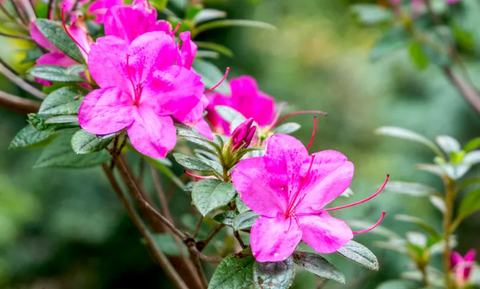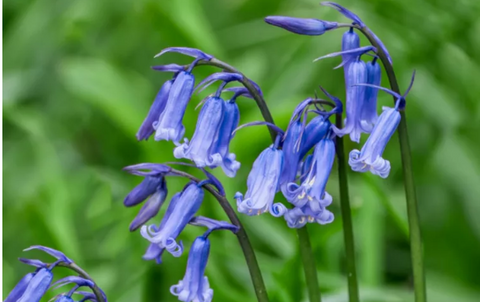Companion planting with flowers is a gardening practice that involves strategically pairing flowers with vegetables, herbs, or fruit-bearing plants to enhance garden health and productivity. Beyond aesthetics, these floral companions offer a range of benefits, from pest control to soil improvement and pollination assistance. In this article, we delve into the world of companion planting with flowers, exploring its advantages and providing practical insights into selecting the right flowers, implementing effective techniques, and avoiding common pitfalls. The following content also has some reference value for raised garden beds.

● Benefits of Companion Planting with Flowers
● Choosing the Right Flowers
● Examples of Flower-vegetable Combinations
● Implementing Companion Planting Techniques
● Maintenance Tips
● Monitoring and Adjusting
● Common Mistakes to Avoid
● Organic and Sustainable Practices
● Conclusion
Benefits of Companion Planting with Flowers
Pest control
Flowers are nature's pest controllers, emitting compounds that repel harmful insects and attract beneficial ones. Marigolds, for instance, emit a scent that deters nematodes and whiteflies, while attracting ladybugs, which feast on aphids. This natural pest control reduces the need for chemical interventions, fostering a healthier garden ecosystem.
Soil improvement
Certain flowers, particularly legumes like clover and vetch, possess the remarkable ability to fix nitrogen in the soil through symbiotic relationships with nitrogen-fixing bacteria. Additionally, deep-rooted flowers such as comfrey help break up compacted soil, improve drainage, and enhance nutrient uptake by neighboring plants, leading to healthier soil and stronger plant growth.
Pollination assistance
Flowers play a pivotal role in attracting pollinators such as bees, butterflies, and hummingbirds, essential for fertilizing fruit and vegetable crops. By interspersing flowering plants throughout the garden, gardeners can increase pollination rates, resulting in better fruit set and higher yields of crops like tomatoes, cucumbers, and squash.
Choosing the Right Flowers
Native flowers
Selecting native flowers is paramount in companion planting, as they are adapted to local environmental conditions and provide essential resources for native pollinators and beneficial insects. Native flowers also require less water and maintenance compared to non-native species, making them ideal companions for sustainable gardening practices.
Diversity of bloom times
To ensure a continuous supply of nectar and pollen for pollinators throughout the growing season, choose flowers with staggered bloom times. Early bloomers like crocus and snowdrops provide vital resources for pollinators emerging from hibernation, while late bloomers such as asters and goldenrod sustain them through the fall months.

Height and structure
Consider the height and structure of flowers when planning companion planting arrangements. Tall flowers like sunflowers and hollyhocks provide vertical interest and support for climbing vegetables, while low-growing varieties like alyssum and creeping thyme serve as ground cover, suppressing weeds and conserving soil moisture.
Examples of Flower-vegetable Combinations
Marigolds with tomatoes
Marigolds are renowned for their pest-repelling properties, particularly against nematodes and whiteflies. Planting marigolds alongside tomatoes not only helps deter pests but also attracts beneficial insects like ladybugs, which feed on aphids, further enhancing pest control in the garden.
Nasturtiums with squash
Nasturtiums are excellent companions for squash plants, as their pungent scent repels squash bugs and other common pests. Additionally, nasturtium flowers attract bees and other pollinators, ensuring better fruit sets and higher yields of squash.
Lavender with carrots
The strong scent of lavender deters carrot flies, which can damage carrot crops. Planting lavender alongside carrots not only helps protect them from pests but also improves soil drainage and structure, promoting healthier root development and higher yields.
Marigolds with Asparagus
Marigolds are also beneficial companions for asparagus, helping to repel nematodes and other soil-borne pests that can affect asparagus crops. Additionally, the bright blooms of marigolds add visual interest to the garden, enhancing its overall beauty.
Chamomile with Broccoli
Chamomile is known for its calming properties, but it also serves as a beneficial companion for broccoli. Planting chamomile near broccoli plants can help improve soil health and deter pests, leading to healthier broccoli plants and higher yields.
Cosmos with Tomatoes
Cosmos flowers are not only beautiful additions to the garden but also beneficial companions for tomatoes. Planting cosmos near tomato plants can attract pollinators and other beneficial insects, leading to better fruit sets and higher yields of tomatoes.
Sunflower with Corn
Sunflowers are tall, sturdy plants that can provide shade and support for corn plants. Planting sunflowers alongside corn not only creates a visually striking garden display but also helps improve soil health and attract pollinators, leading to higher yields of corn.
Implementing Companion Planting Techniques
Interplanting
Interplanting involves mixing flowers and vegetables within the same bed or row to maximize space and biodiversity. By carefully selecting companion plants with complementary growth habits and nutrient needs, gardeners can create thriving ecosystems that support each other's growth and productivity.
Border planting
Border planting involves creating flower borders around vegetable beds or garden plots, providing a natural barrier against pests and weeds while enhancing the garden's aesthetic appeal. By selecting flowers with pest-repelling properties and attractive blooms, gardeners can create beautiful and functional garden borders that benefit both plants and pollinators.
Succession planting
Succession planting involves rotating crops and flowers throughout the growing season to maximize yields and minimize pest and disease pressure. By planting flowers and vegetables in succession, gardeners can ensure a continuous supply of fresh produce and flowers while maintaining a healthy and balanced garden ecosystem.
Maintenance Tips
Watering needs
Water flowers and vegetables according to their specific needs to promote healthy growth and prevent stress. Deep watering encourages robust root development, while mulching helps retain soil moisture and suppress weeds, reducing the need for frequent watering.
Weed management
Mulch flower and vegetable beds to suppress weeds and conserve soil moisture. Regularly remove weeds by hand or using a hoe to prevent competition for nutrients and water, ensuring optimal growing conditions for companion plants.
Pruning and deadheading
Regularly prune and deadhead flowers to promote new growth and prolong blooming. Remove spent flowers and diseased foliage to prevent the spread of pests and diseases, maintaining a tidy and healthy garden environment.

Monitoring and Adjusting
Observing plant interactions
Observe plant interactions in the garden, noting any signs of pest infestation, nutrient deficiencies, or other issues. Adjust planting arrangements as needed to promote healthy growth and minimize pest and disease pressure, ensuring optimal garden productivity.
Rotating crops and flowers
Rotate crops and flowers regularly to prevent soil depletion and reduce the buildup of pests and diseases. Avoid planting the same species in the same location year after year, as this can lead to nutrient imbalances and increased pest pressure. Instead, rotate crops and flowers to different areas of the garden each season to maintain soil fertility and overall garden health.
Common Mistakes to Avoid
Overcrowding
Avoid overcrowding plants, as this can lead to competition for resources and increased susceptibility to pests and diseases. Give plants plenty of space to grow and spread out, ensuring optimal airflow and sunlight penetration for healthy growth.
Ignoring plant compatibility
Be mindful of plant compatibility when planning companion planting arrangements. Avoid planting incompatible species together, as this can lead to nutrient imbalances, allelopathy, and poor growth. Instead, choose companion plants that complement each other and support each other's growth and productivity.
Neglecting maintenance
Regular maintenance is essential for a healthy and productive garden, so be sure to stay on top of tasks such as watering, weeding, and pest control. Neglecting maintenance can lead to decreased yields, increased pest and disease pressure, and overall garden failure. Take the time to care for your garden regularly, and you'll be rewarded with bountiful harvests and beautiful blooms.
Organic and Sustainable Practices
Avoiding chemical pesticides and fertilizers
Opt for organic pest control methods and natural fertilizers to minimize harm to beneficial insects and soil organisms. Chemical pesticides and fertilizers can have detrimental effects on garden ecosystems, disrupting natural balance and harming non-target species. Instead, use organic and sustainable practices to promote garden health and environmental stewardship.
Composting and natural amendments
Use compost and other natural amendments to improve soil fertility, structure, and water retention in the garden. Composting organic matter such as kitchen scraps, yard waste, and livestock manure helps replenish soil nutrients and promote beneficial soil microorganisms, leading to healthier plants and higher yields. Additionally, natural amendments such as bone meal, kelp meal, and rock dust can provide essential nutrients and minerals for optimal plant growth and productivity.
Conclusion
Companion planting with flowers offers numerous benefits for gardeners, from pest control and soil improvement to pollination assistance and aesthetic enhancement. By carefully selecting the right flowers and implementing effective companion planting techniques, gardeners can create thriving and beautiful gardens while boosting yields and promoting biodiversity. Embrace the art of companion planting with flowers in your garden, and enjoy the rewards of a healthier, more productive, and more beautiful outdoor space.









